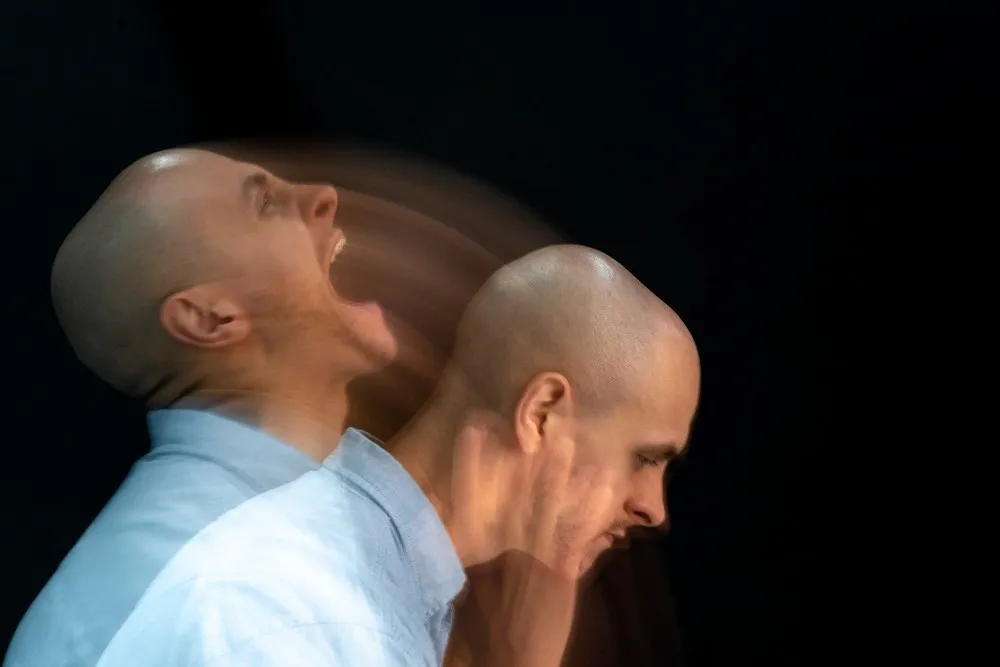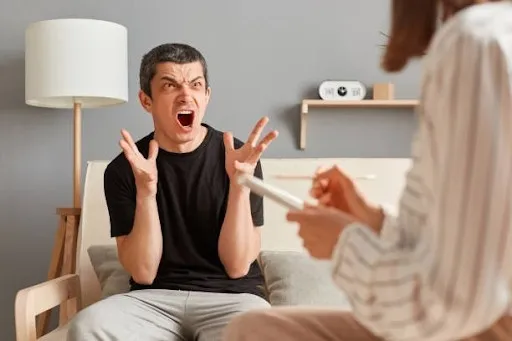|
Aphantasia limits mental imagery, making it hard to picture scenes or objects. Simple self-tests help reveal if your mind’s eye forms vivid visuals or stays blank. |
Ever tried to picture a loved one’s face and ended up with… nothing? No fuzzy outline, no color. Just blank space. That gap in mental imagery can feel strange, especially when others claim they “see” scenes like movies in their head. Some notice it early. Others stumble on the fact much later.
This difference has a name: aphantasia. Understanding where you sit on the visual spectrum starts with asking the right questions and running simple tests to see what your mind’s eye is really showing.
How Reliable Is an Aphantasia Test?
Accuracy depends on slow testing, repeated checks, and honest note-taking. One test cannot tell the full story. Patterns over days matter more than single attempts.
Mental imagery changes with stress, sleep, and focus. So, the path is observation, not judgment.
Recent population research shows:
-
Around 8.9% of adults self-report very low or missing mental imagery
-
Earlier structured screening found around ~3.9% with weak or no internal visualization in large group tests
These numbers do not classify or label you. They only show that different thinking styles are common, not rare. Use the aphantasia test steps below as a tracking tool. Repeat weekly. Watch the consistency.
What Is Aphantasia?
Aphantasia means difficulty or absence of mental images. People might know facts, recall steps, and reason well, yet see no inner pictures. Some notice it in childhood. Some after an injury. Others discover it during mindfulness practice. Many still thrive at work, in art, and in science.
It often shows an inability to visualize details like faces, places, or colors on demand. Some call it a blind mind’s eye because everything stays conceptual or verbal. If you still wonder “what is aphantasia,” keep reading the drills below; you’ll match your experience to patterns fast.
The Step-by-Step Aphantasia Test
Start with one supportive idea: self-testing works best when you slow down, set a calm space, and rate results without pressure. Then, run three simple drills, record notes, and compare over a week.
If you ask how to test for aphantasia or how to know if you have aphantasia, this stack gives a strong read. It’s also a practical mind’s eye test and a repeatable visual imagery test for daily tracking. For a quick screen, you can supplement with an aphantasia test online, but keep these core steps for depth and reliability. Use a timer, write ratings, and save notes.
1) The Apple Visualization Test (scale 1–5 vividness)
Imagine a red apple with eyes closed for 20 seconds. Then rate clarity from 1 to 5. Describe color, shape, highlights, and texture. Compare morning vs. night and calm vs. rushed states.
-
1 → Only concept, no image
-
2 → Faint shape, unstable
-
3 → Recognizable but dim
-
4 → Clear form
-
5 → Almost lifelike
Track tiny changes. Even slight shifts matter.
Transition: Now test whether you can hold scenes, not just single objects.
2) Scene Visualization Exercise (imagine a beach or forest)
Pick one scene: a quiet beach or a shaded forest. Spend 30 seconds imagining light, layout, and motion. Then write what you “saw,” heard, or sensed. Judge vividness and stability.
Look for:
-
Fixed horizon or shifting space
-
Presence of texture (sand grain/bark roughness)
-
Sound memory (wave/leaf rustle)
-
Color stability
If your description contains terms like “I know the idea, but I do not see anything,” This is a strong aphantasia indicator.
Transition: Now we shift to dreams, where imagery may behave differently.
3) Dream Recall Check (vivid vs. abstract)
Right after waking, write your dream for two minutes. Do this for five mornings.
Observe:
-
Does the dream come as a story, not a picture?
-
Do you recall emotions more than visuals?
-
Does recall fade in seconds?
If dreams never contain visuals, imagery absence is consistent. If dreams do have images, but waking imagination does not, visualization may be attention-linked, not absent.
How to Interpret Your Results
This is where most competing pages outperform. So we add this carefully. If across tests you:
|
Pattern |
Likely Imagery Style |
|
No pictures in any exercise |
Possible aphantasia |
|
Faint, unstable, unclear images |
Hypophantasia (reduced imagery) |
|
Clear, colorful internal visuals |
Typical imagery |
|
Extremely strong images |
Hyperphantasia |
There is no hierarchy here. Every style is workable. You only need the method that matches your brain.
Alternative Self-Checks for Aphantasia
You can layer other quick checks to confirm patterns, reduce bias, and get richer signals. Mix short recall, fast drawing, and mental rotation. Then, compare the results with your apple and scene drills. If you want to test for aphantasia beyond ratings, add these.
If you prefer digital screens, try an aphantasia test online as a baseline, and then validate with offline exercises. For people who may consider a formal review later, these notes can support an aphantasia diagnosis without pressure.
Comparison Table: Self-Checks at a Glance
|
Self-check |
What to note |
Typical time |
|
10-item shopping recall |
Visual vs. verbal recall style |
3 minutes |
|
Face features sketch (memory) |
Layout of eyes, nose, hairline from memory |
4 minutes |
|
Room layout from memory |
Object positions, distances, and relative sizes |
3 minutes |
|
Mental rotation (cube/letter) |
Ease of turning shapes in the mind vs. guessing |
4 minutes |
|
Color swatch recall |
Ability to “hold” a color and name close matches |
2 minutes |
Use these as short trials. Rotate across a week, revisit monthly, and add notes. Combine results with the apple drill. Then, if needed, bring clean summaries to a clinician for aphantasia diagnosis screening. Keep it simple, consistent, and repeatable.
Signs and Symptoms of Aphantasia
People often notice patterns first, labels later. Start by checking how you remember trips, faces, and layouts. Then, look at how you plan routes, read fiction, or follow slide decks. If image construction never arrives, or fades at once, you may see stable traits. Use these themes to guide training and to explain needs at work.
1. Memory and Recall in Everyday Life
You might store events as facts, sequences, or sounds, not scenes. Names stick, yet faces blur. Places are reduced to turns and counts, not landmarks. This is common and workable.
-
You report an inability to visualize faces during recall.
-
You rely on lists and maps instead of pictures.
-
You describe events in words, timing, and logic.
-
You value diagrams others draw, yet you don’t “see” them later.
2. Creative Workflows and Planning
People build strong ideas without imagery by using structure. That means outlines, analogies, and prototypes. It also means vocal rehearsal and tactile methods. This is a valid path.
-
You sketch rough shapes for others, not for yourself.
-
You draft outlines first, then iterate with feedback.
-
You prefer audio notes over mood boards.
-
You spot signs of aphantasia when tasks demand vivid scenes.
3. Emotions, Reading, and Story Worlds
Readers with low imagery still love fiction. They anchor on voice, plot, and theme. They track beats with notes. They engage with character arcs and dialogue more than landscapes.
-
You feel scenes emotionally but cannot hold visuals.
-
You enjoy dialogue-heavy writing.
-
You prefer crisp stage directions in scripts.
-
You notice aphantasia symptoms most when people ask, “Picture this.”
Living with Aphantasia: Pros and Cons
Let’s keep this balanced. Plenty of people build great careers with this profile. They code, lead, teach, research, and write. They lean on systems, language, and data. They also partner with visual colleagues. Together, teams move faster.
Pros: Less intrusive memories, factual thinking.
Less mental replay can reduce emotional spikes from past events. Many describe a quick recovery after tough moments. They pivot to steps and timelines. They navigate with lists. They present clean logic. They also excel in audit trails, compliance writing, operations flow, and technical documentation. Process wins. Structure carries.
Cons: Challenges with visualization-based creativity.
Pitch decks with “imagine this scene” can feel heavy. Mood boards may not click. Some design tasks stall without visual anchors. Work around that with references, prototypes, and wireframes. Use Dual Coding with text plus icons. Try Guided Imagery audio even if pictures resist; sometimes rhythm helps. And keep whiteboard sessions short, frequent, and concrete.
What to Do After Taking the Test
Document your scores from each aphantasia test step, keep a weekly log, and add three-line summaries. Try calming routines before testing, like progressive muscle relaxation. Then, adjust study or work habits.
If results point to persistent issues, seek a clinician for screening and next steps. You can try an aphantasia test online for tracking, and you can ask how to test for aphantasia in a clinic setting if a formal review fits. Bring examples, not just labels.
Conclusion
Aphantasia changes how experiences are stored and recalled, but it doesn’t block learning or creativity. Regular testing, honest tracking, and practical adjustments make daily tasks smoother. If images appear faintly or not at all, structured approaches can replace them with clarity and consistency.
The key is knowing your own style and building habits around it. Over time, strengths emerge in unexpected ways, and work flows better when tools match how the brain operates. Awareness is the first step toward making those tools work.
वारंवार विचारले
Does aphantasia affect intelligence?
No. Intelligence does not depend on visual imagination. Many people with aphantasia excel in strategy, writing, coding, law, teaching, and research. They think in steps, logic, words, or patterns instead of internal pictures.
Can aphantasia change over time?
Some people notice slight improvements through steady visualization practice or guided imagery. Others do not see any change, and that is also normal. Life still functions smoothly by using written, audio, and structured methods.
Does it affect emotional memory?
Some people report fewer intrusive memories because they do not replay images. They remember what happened and how they felt, but without strong mental pictures. This can make emotional recovery easier in some situations.
Can people without mental pictures still learn design skills?
Yes. Use reference boards, component libraries, and grid systems. Build drafts from examples, not mental scenes. Iterate with feedback fast. Over time, muscle memory and pattern libraries do heavy lifting across projects.
Does low imagery affect memory for directions and places?
Often yes. People may rely on text-like cues and turn counts instead of landmarks. Use GPS with saved routes, add numbered steps, and mark POIs. Share a printed route as backup. Keep redundancy simple and usable.
Should I seek medical evaluation?
If imagery changed suddenly after an injury or emotional shock, then speaking to a clinician may help. If imagery has always been absent since childhood, then it is simply your thinking style and not a medical concern.
Can someone with aphantasia enjoy art or nature?
Absolutely. Aphantasia affects internal imagery, not external perception. People enjoy beauty in real time, even if they cannot recreate the scene later in their mind.
Can training increase image vividness in adults?
Some report small gains with repeated drills, meditation, and audio-guided imagery. Others see no shift and still perform well. Focus on tools you control: checklists, prototypes, sketches, and collaborative visuals. Track outcomes, not only sensations.
Will aphantasia change how fiction feels?
It might. Readers often connect through dialogue, pacing, and theme rather than visuals. Choose authors with strong character work. Annotate scenes with brief notes. Use audiobooks for tone and rhythm. Enjoy the story in your own way.
Any study tips for students who cannot form pictures?
Yes. Use Cornell notes, spaced repetition, and retrieval practice. Pair definitions with small diagrams others drew. Build mind maps from text blocks. Teach someone else the concept. Keep sessions short and frequent for energy and focus.
-User-1754380331.png)
लिहिलेले







